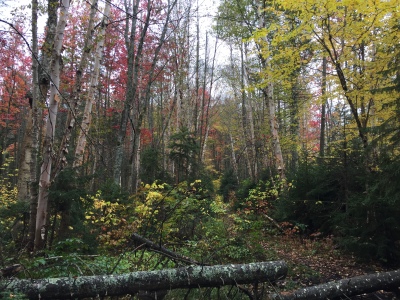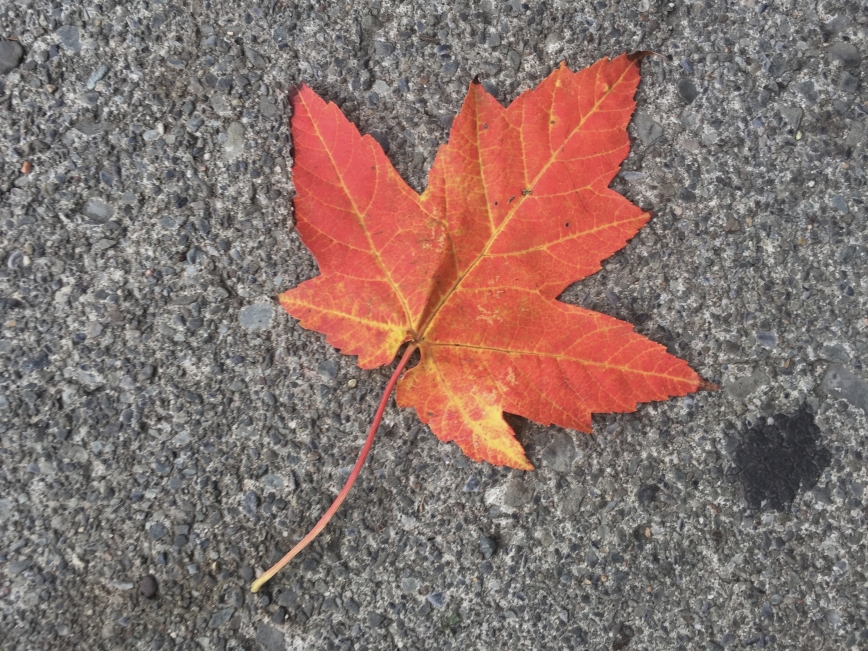Your social media is filled with forest scenes,

your coworker keeps talking about “peak foliage” like the rapture is coming,

and floating in the air is a faint whiff of organic decay (or is it pumpkin spice?)
Is it time to put on your hiking boots and go leaf-peeping?
Only if you’re OBSESSED WITH MORTALITY and DELIGHT IN SUFFERING.
Yeah, you heard me. Stunning leaf colors result from a type of programmed cell death called senescence.

Deciduous trees wouldn’t benefit from photosynthesizing in winter, when it’s freezing cold and the days are short, so they kill off their leaf cells in an organized, predetermined way.
Trees do this every year. And yet, every year, the trees leave a bunch of valuable nutrients in their leaves until the very last minute. And then they freak out*.

Guess what’s extremely rich in nitrogen?
Chlorophyll.
You know, the main photosynthetic pigment. It makes leaves green.

When day length gets short enough, just weeks before the leaves will fall, trees start quickly degrading their leaf chlorophyll and pulling nitrogen back into the trunk. So the green leaf color disappears.
When you take away chlorophyll, what’s left?
Leaves actually have other photosynthetic pigments besides chlorophyll. The main ones are carotenoids.
Carotenoids are the pigments that make fall leaves look yellow!

One of these carotenoids is beta-carotene, aka Vitamin A. Beta-carotene is also found in– you guessed it– carrots.

Ok, so that explains why leaves lose their green color and are left looking yellow.
But wait, don’t some leaves turn dark red?

There are other pigments involved: anthocyanins.
They’re the pigments that make blueberries blue, and this weird cauliflower purple.

Unlike with carotenoids, the amount of anthocyanins in leaves actually increases during autumn. Anthocyanins protect leaves from excess light while chlorophyll disappears and nitrogen recycling occurs. So anthocyanins accumulate under sunny and cold conditions, which is when leaves would be most likely to suffer damage.
That’s why certain fall seasons have more vivid colors than others, even though leaf senescence is initiated based on day length.
One important caveat to all this is that trees aren’t all alike in when their leaves die. It varies by species, and some trees don’t shed their leaves at all.

The forest is a mosaic of tree leaves senescing at different times.

The timing of this process also varies geographically because trees are adapted to local climates. The fall colors in your hometown could change if the climate shifts.
So, dear meat bag, you now know the truth. Leaves are basically a memento mori. Ah, the frailty of earthly life!
It takes a truly twisted soul to appreciate leaf death.
Think about that as you bump into the hipsters snapping pics of leaves on the sidewalk.

*Alder trees that host nitrogen-gathering bacteria actually just drop their leaves green because they have so much nitrogen to spare. Make it rain green, baby!!

Sources & Further Reading:
Ingvarsson, P.K., Garcia, M.V., Hall, D., Luquez, V., Jansson, S. 2006. PhyB2, a Candidate Gene for Day-Length-Induced Growth Cessation and Bud Set, Across a Latitudinal Gradient in European Aspen (Populus tremula). Genetics 172: 1845-1853.
Keskitalo, J., Bergquist, G., Gardestrom, P., Jansson, S. 2005. A Cellular Timetable of Autumn Senescence. Plant Physiology 139.4: 1635-1648. (Main source)
Panchen, Z.A., Primack, R.B., Gallinat, A.S., Nordt, B., Stevens, A.D., Du, Y., Fahey, R. 2015. Substantial variation in leaf senescence times among 1360 temperate woody plant species: implications for phenology and ecosystem processes. Annals of Botany 116: 865-873.


I am basically the Wednesday Addams of autumn. I love leaf senescence! Die leaves, die! Your death is my drug. I am intoxicated by watching you die.
LikeLike